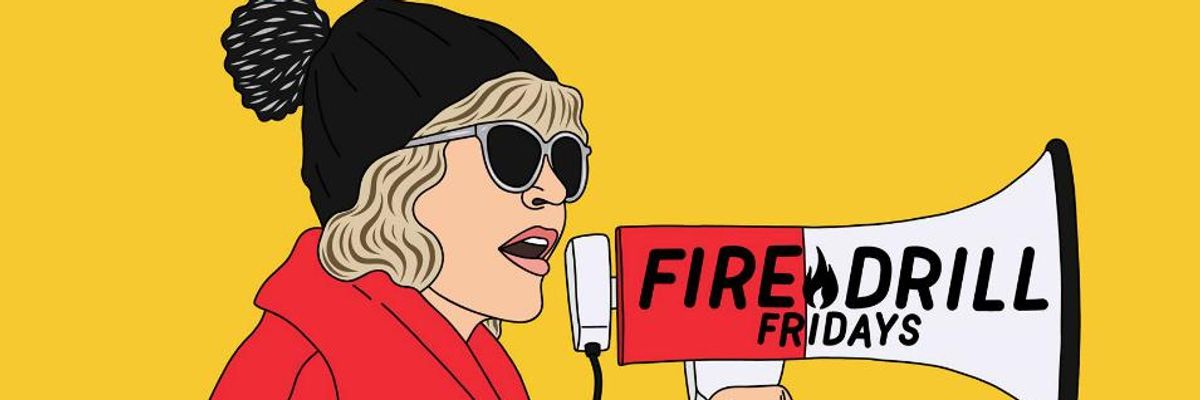At a private home on the west side of Los Angeles in late January, two worlds collided: the grassroots environmental activists working in our city's low-income communities--where toxic oil wells drill near homes and schools--and the the celebrity-activist firepower of Jane Fonda.
It might be shooting the next season of Grace and Frankie that brought Jane back to Los Angeles, and we are excited to partner with her and a handful of her friends in "the industry" to launch the Fire Drill Friday movement here in Los Angeles. Together, we are facing a common enemy: the fossil fuel industry that drives the climate crisis and pollutes neighborhoods from South Los Angeles to the Harbor.
Los Angeles is the perfect city to host the launch of Fire Drill Fridays in California--where our "West Coast" image of environmental progressivism clashes with the reality of a city still grappling with its relationship to the fossil fuel industry. People know about our massive freeways, millions of cars and smoggy air. Fewer know that Los Angeles--and the entire state--are still taking huge amounts of oil out of the ground, and release massive amounts of toxic emissions into our air and climate.
"Aside from its health-protective benefits, a health and safety buffer is also an opportunity for Los Angeles to model for the rest of the state and the world what it looks like to make a just transition away from a fossil-fueled economy, leaving no community or worker behind."
While Mayor Eric Garcetti and our City Council position Los Angeles as an international climate leader, our city is home to the largest urban oil field in the nation. Hundreds of active oil wells drill for climate-shifting and health-harming fossil fuels a stone's throw from classrooms, homes, and parks. In the Southern California Air Basin, over 620,000 people live within a half-mile of a polluting oil well. Unsurprisingly, these wells are often clustered in low-income communities and communities of color, who are disproportionately exposed to health impacts such as increased rates of asthma attacks and other respiratory illness, increased cancer risk, and risk to the reproductive system.
Frontline communities--those experiencing the brunt of fossil fuel pollution--are leading the movement to protect Californians from the toxic impacts of the oil industry. Here in Los Angeles, communities in South Los Angeles, University Park, and Wilmington have organized and mobilized together as an environmental justice coalition called STAND-L.A. to urge the City Council to implement a 2,500-foot health and safety buffer that separates oil wells from homes, schools, and other sensitive areas.
A health and safety buffer can protect Angelenos--and hopefully, with action from Gov. Gavin Newsom, frontline communities across California--by removing their exposure to toxic chemicals and emissions from active oil wells in their neighborhoods, where they never belonged in the first place.
Aside from its health-protective benefits, a health and safety buffer is also an opportunity for Los Angeles to model for the rest of the state and the world what it looks like to make a just transition away from a fossil-fueled economy, leaving no community or worker behind.
"Just as frontline, working class communities have experienced the brunt of the pollution and have led the fight to transition away from fossil fuels, they should also be the first to benefit from the economic opportunities of a clean energy economy."
Just as frontline, working class communities have experienced the brunt of the pollution and have led the fight to transition away from fossil fuels, they should also be the first to benefit from the economic opportunities of a clean energy economy. In all the doom and gloom of the climate crisis, this is the silver lining of opportunity and justice.
This Fire Drill Friday in Los Angeles is the beginning of an intersectional, multi-generational series of actions, gathering Californians together to urge our elected leaders to take brave and visionary action in the face of our state's climate weakness: oil. The message that our elected leaders should take away from today's action is this: We need you to be bold in your commitment to frontline communities. We need to be visionary in your commitment to our future. And we need you to act now.
